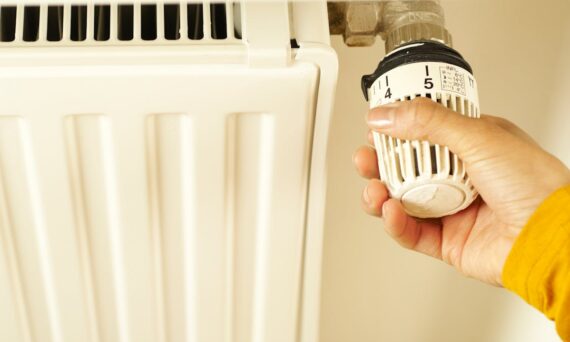Election polls have become a staple of modern democratic processes, serving as barometers of public opinion. However, when these polls miss the mark, the implications can ripple through the political landscape. Let’s explore the various dimensions of what happens when polls fail to accurately predict election outcomes.
The Pressure of Prediction
Polls are often seen as a crystal ball, providing insights into voter sentiment. Politicians, media outlets, and the general public turn to them for predictions about election outcomes.
When polls show a certain candidate leading, it can create a bandwagon effect, influencing undecided voters to join the perceived winner. But when the actual results deviate from the predictions, it can lead to a crisis of confidence.
Pollsters face immense pressure to deliver accurate forecasts. They employ various methods, including random sampling and statistical analysis, to gauge voter sentiment.
Yet, these methods are not foolproof. A small miscalculation in sampling can skew results, leaving everyone scratching their heads when the votes are tallied.
Shifting Public Sentiment
Voter opinions can shift rapidly before an election, influenced by current events, debates, and media coverage. When polls fail to capture these shifts, the results can be misleading.
For instance, a candidate may gain momentum from a viral moment or lose support after a misstep, rendering previous polling data obsolete.
This phenomenon highlights the dynamic nature of political engagement. Voters are not static; they react to the unfolding political narrative. When polls do not account for this fluidity, they risk portraying a false sense of stability.
The Role of Sampling Bias
Another critical factor in polling accuracy is sampling bias. Pollsters aim to represent the electorate, but if the sample is skewed, the results will be off.
For example, if a poll over-represents younger voters while under-representing older demographics, it may lead to skewed results that do not reflect the actual voting population.
Bias can also stem from geographical factors, socioeconomic status, and even timing. Certain regions may lean heavily toward one party, and if a poll doesn’t adequately capture this, it can lead to a misleading wave of optimism or pessimism about a candidate’s chances.
The Impact of Social Media

In recent years, social media has transformed the landscape of political campaigns and public opinion. Platforms like Twitter, Facebook, and Instagram allow for rapid dissemination of information—and misinformation.
Polls that rely solely on traditional methods may miss these online dynamics, leading to inaccuracies in predicting voter behavior.
Social media can amplify specific voices, creating a false sense of consensus around a candidate. This can skew poll results if those conducting the surveys do not account for the influence of these platforms.
When social media momentum does not translate into votes, the disparity becomes glaringly evident post-election.
The Consequences of Inaccurate Polling
When polls miss the mark, the consequences can be profound. For candidates, a misleading poll might embolden them to double down on ineffective strategies or messaging. This can waste resources and time, potentially altering the course of their campaign.
One recent example is when Freshwater failed to predict election result outcomes, prompting scrutiny over the reliability of pre-election polling data.
For voters, inaccurate polling can lead to disillusionment. If people feel their votes don’t matter because the polls suggested a different outcome, they may be less inclined to participate in future elections. This erosion of trust in the electoral process is a slippery slope toward political apathy.
Political Repercussions
Polls serve as a gauge of political health, influencing party strategies and tactics. If a party believes their candidate is on the rise based on polling data, they may invest more heavily in that campaign.
When the actual results don’t match the polls, it can lead to internal strife. Party leaders may face scrutiny over their decision-making, and factions within the party could emerge.
On a broader scale, when polls misfire, they can skew public discourse. Following a surprising election outcome, pundits often scramble to explain the disconnect.
If voters supported an unexpected candidate, it may challenge existing narratives about voter demographics and preferences, leading to calls for a re-evaluation of political strategies.
The Ethics of Polling
The responsibility of accurately representing public opinion weighs heavily on pollsters. When polls consistently miss, it can lead to questions about their methodology and ethics.
Polling organizations may face backlash for perceived biases or inaccuracies, prompting calls for transparency in how data is collected and analyzed.
In a world increasingly wary of misinformation, the integrity of polling processes is critical. If the public begins to distrust polling data, it could undermine the very purpose of these surveys.
Pollsters must be diligent in their approach, ensuring that they reflect the electorate’s true sentiments rather than shaping them.
The Way Forward: Improving Polling Methods
To enhance the reliability of election polling, various strategies can be employed. Tech advancements are opening new avenues for data collection, allowing for more representative samples.
Methods such as online surveys and mobile apps can capture a broader range of voices, especially among demographics that are traditionally hard to reach.
Moreover, pollsters can benefit from a multi-faceted approach, combining traditional methods with innovative techniques. Engaging with focus groups or employing predictive analytics can provide deeper insights into voter behavior.
The key is recognizing that polling is not a one-size-fits-all endeavor; it requires flexibility and adaptation to the changing political climate.
Learning from Failures
When polls miss the mark, it’s often an opportunity for learning. Political analysts and pollsters assess what went wrong, identifying key areas for improvement. By understanding the factors that led to inaccuracies, they can refine their methodologies for future elections.
This process of reflection helps build a more resilient polling landscape. Pollsters can share best practices and collaborate to elevate the standards of their profession. In doing so, they contribute to a healthier democratic process, where public opinion is accurately represented.
The Unpredictable Nature of Elections
Elections are inherently unpredictable. The interplay of public sentiment, media influence, and campaigning tactics creates a complex web that is challenging to untangle.
Polls, while valuable tools, can only provide a snapshot of a moment in time. The true measure of voter behavior often reveals itself only on election day.
When polls miss, it serves as a reminder that political landscapes are not easily mapped. Each election cycle brings new dynamics, and adapting to these changes is part of the ongoing evolution of democracy.
Recognizing this unpredictability can cultivate a more nuanced understanding of polling and its role in the electoral process.
As we observe future elections, the lessons learned from polling misfires will undoubtedly shape how we engage with public opinion. The dance between data, sentiment, and political reality continues, reminding us that in the world of elections, nothing is set in stone.
























